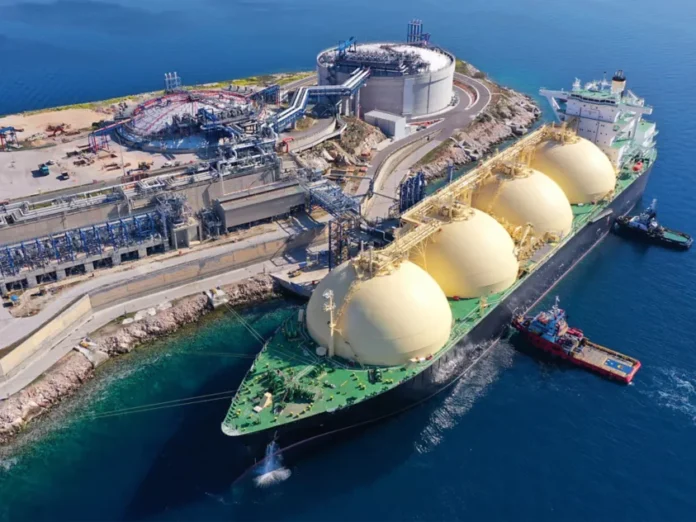The Role of Natural Gas and LNG in a Low-Carbon Future
Natural gas and liquefied natural gas (LNG) are increasingly recognized as pivotal elements in the transition to a low-carbon energy future. As countries strive to meet climate goals and reduce greenhouse gas emissions, these energy sources provide a viable pathway to bridge the gap between traditional fossil fuels and renewable energy systems. By offering a cleaner-burning alternative to coal and oil, natural gas significantly lowers carbon emissions when used for electricity generation and heating, thereby supporting efforts to mitigate climate change.
The versatility of natural gas is one of its key advantages. It can be utilized across various sectors, including power generation, transportation, and industrial processes. Furthermore, LNG, which is natural gas cooled to a liquid state, allows for easier storage and transportation, particularly to regions that lack pipeline infrastructure. This characteristic makes LNG a strategic option for countries aiming to diversify their energy supply while reducing reliance on coal or other high-emission fuels.
Importantly, while natural gas and LNG are not without their environmental considerations—such as methane emissions during extraction and transport—their role in achieving a phased transition toward a renewable-heavy energy landscape is vital. The energy industry faces the challenge of balancing the need for a reliable energy supply with the imperative of reducing emissions. This balance includes investing in technology to improve the efficiency of gas infrastructure and developing carbon capture and storage solutions that further mitigate the environmental impact of natural gas usage. As such, natural gas and LNG are positioned as essential components in creating a sustainable energy future, facilitating the gradual reduction of carbon footprints while ensuring energy reliability and access globally.
Insights from Industry Leaders
In the evolving landscape of energy, industry leaders play a crucial role in shaping the discourse around sustainable solutions. Fatema Mohamed Al Nuaimi, CEO of ADNOC Gas, emphasizes the resilience of natural gas as a fundamental energy resource. According to Al Nuaimi, natural gas not only complements renewable energy sources but also supports energy security as the world shifts towards a low-carbon future. She advocates for a diversified energy portfolio, highlighting that natural gas can significantly contribute to mitigating greenhouse gas emissions while fulfilling the growing global energy demands.
On the other hand, Massimo Di Odoardo, VP of Gas and LNG Research at Wood Mackenzie, underscores the importance of the liquefied natural gas (LNG) market. He points out that natural gas, in its LNG form, offers flexibility and accessibility to various regions. Di Odoardo notes that countries with limited access to pipeline infrastructure can leverage LNG imports to meet their energy needs efficiently. He also warns that while electrification holds promise, it is essential to recognize its limitations, especially in sectors that require high energy densities, such as heavy industry and transportation.
The insights provided by these leaders reflect a consensus on the pivotal role that natural gas will continue to play in the energy transition. Both executives stress that transitioning to renewable energy does not solely rest on electrification; rather, natural gas serves as a vital bridge that can enhance energy diversification and resilience. By leveraging natural gas and LNG, the industry can create value and ensure a more reliable energy supply for an expanding global population while aiming for sustainability targets.
Geopolitical and Economic Factors Influencing Energy Supply
The dynamics of natural gas and liquefied natural gas (LNG) supply are significantly influenced by various geopolitical and economic factors that shape the global energy landscape. Political relations between nations often dictate the flow of energy resources, impacting supply chains and, ultimately, energy security. For instance, countries rich in natural gas reserves, such as Russia and the United States, play pivotal roles in global supply networks. This influence can create vulnerabilities, especially in regions dependent on imported energy, leading to fluctuating prices and potential energy insecurity.
Moreover, economic factors such as market demand, technological advancements, and investment trends further complicate the natural gas and LNG sectors. The rapid increase in the demand for cleaner energy sources is changing the way countries approach their energy strategies. For instance, as the world moves towards decarbonization, nations are investing in LNG as a bridge fuel, recognizing its lower carbon emissions compared to coal and oil. This transition not only reinforces the importance of natural gas in achieving energy goals but also highlights how economic motivations reshape energy markets.
Furthermore, innovative technologies, particularly in carbon capture, utilization, and storage (CCUS), are gaining traction as strategies for mitigating greenhouse gas emissions from natural gas usage. These advancements aim to augment natural gas’s role as a cleaner energy source, making it more appealing amidst tightening environmental regulations. As nations embark on ambitious climate targets, incorporating CCUS technology can bolster the sustainability of natural gas, fostering a more stable and secure energy future.
In conclusion, geopolitical relations and economic shifts are crucial to understanding the complexities of natural gas and LNG supply. By addressing these factors, stakeholders can better navigate the evolving energy landscape and contribute to the development of a more sustainable energy system.
The Future of Nuclear Energy and an Inclusive Transition
Nuclear energy is poised to play a critical role in the evolution of a sustainable energy infrastructure, especially as the world seeks to mitigate climate change and achieve energy security. The landscape of nuclear power is rapidly changing, with advancements in technology and a renewed focus on sustainability presenting new opportunities. Experts like Dr. Sama Bilbao y León underscore the significance of strategic investment in nuclear technology, asserting that it forms a formidable component of a resilient energy framework. The transition to a more environmentally friendly energy mix necessitates the exploration of diverse energy solutions, with nuclear power being an essential facet due to its low carbon emissions and reliability.
As nations seek to fulfill their energy needs sustainably, the conversation around nuclear energy has shifted from safety concerns to recognition of its potential in reducing greenhouse gas emissions. Innovative designs such as small modular reactors (SMRs) and advancements in safety protocols further bolster the viability of nuclear as a safe, efficient energy source. Dr. Bilbao y León emphasizes that strategic investment in these technologies, along with comprehensive planning and regulatory frameworks, is vital for harnessing their full potential.
An inclusive energy transition is also central to this discussion. Jassim Alshirawi highlights the importance of equity in the evolving energy landscape, arguing that the benefits of nuclear energy should be accessible to all communities. This entails engaging diverse stakeholders, understanding regional energy needs, and ensuring that the transition does not disproportionately burden marginalized populations. The call for equitable solutions emphasizes that sustainable energy systems must be designed in a manner that addresses social and economic disparities. By incorporating diverse community perspectives, the future of nuclear energy can be shaped into one that fosters inclusivity, ultimately reinforcing its role as a pillar in the development of a sustainable energy future.



I view something really special in this web site.
I would like to thnkx for the efforts you have put in writing this blog. I’m hoping the same high-grade site post from you in the upcoming as well. In fact your creative writing abilities has inspired me to get my own web site now. Really the blogging is spreading its wings rapidly. Your write up is a good example of it.
Hello, Neat post. There’s an issue with your website in internet explorer, might check thisK IE nonetheless is the marketplace chief and a big component of people will leave out your magnificent writing because of this problem.
I am very happy to read this. This is the kind of manual that needs to be given and not the random misinformation that’s at the other blogs. Appreciate your sharing this best doc.
Excellent blog here! Also your website a lot up very fast! What host are you the usage of? Can I get your affiliate hyperlink in your host? I want my web site loaded up as fast as yours lol